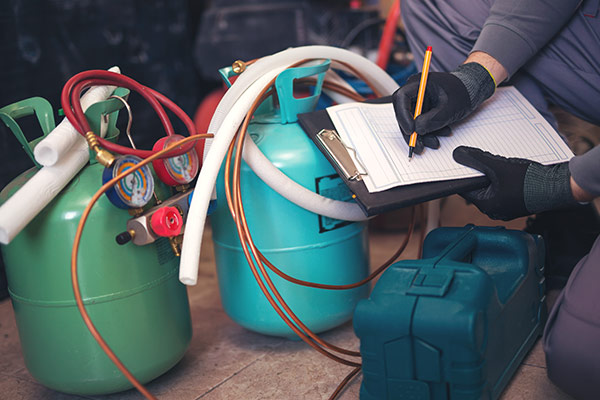R22 Phase Out – What Are Your Options?
2020 has arrived and with it the final stage if the phase-out of R22 refrigerant. This means that R22 will no longer be available for air conditioning or HVAC units and systems that rely on this gas.
The reason for the phase-out, which was implemented in 8 stages since 2013, is part of a collaborative effort to eliminate ozone-depleting substances at an international level. Scientific research has established that R22 is one of these substances as it emits HCFC’s which, much like CFCs, damage the ozone layer.
The phase-out strategy was implemented in order to provide owners of equipment that use the gas with the opportunity to replace expensive units or systems in increments rather than with immediate effect. However, with the phase-out schedule at the last stage, it does mean that more immediate action may need to be taken.
So what are the options for 2020 when it comes to running HVAC equipment without R22?
1. Reclaimed And Previously Manufactured Gas
There is still the option to purchase and use gas that was manufactured before the 2020 cutoff date or gas that has been reclaimed from equipment that is no longer in use. However, it goes without saying that there is only a limited supply available and the cost of the gas is likely to become greatly inflated to meet the demand without any new supply coming in. This is, therefore, a short term solution and once these sources have been depleted, another plan will need to be made.
2. Retrofitting
In some cases, heating and cooling systems can be retrofitted to use other types of coolants or refrigerants. However, not all systems will be able to operate using the newer refrigerants that are more environmentally friendly. It is recommended to have your system evaluated by an HVAC expert at Columbia Heating and Cooling in order to determine whether it can be retrofitted and what this will entail. While retrofitting may be less expensive than the full replacement of an entire system, this may also only be a temporary solution and not the ideal option for an extended period of time. Keep in mind that systems using R22 are older and probably near the end of their lifespan anyway.
3. Replacement
At the end of the day, the only real option that makes sense, in the long run, is replacing all HVAC equipment that runs on R22 refrigerant gas. However, this does not mean that a unit or system needs to be replaced with immediate effect. Even though the last stage of the phase-out has been reached, it is still possible to run an older system and refill it with recycled R22 – although we wouldn’t recommend it.
At this point, a decision must be made as to whether to replace the HVAC system. In the long run, it is probably going to be best to replace rather than trying to operate the system on reclaimed gas or by having it retrofitted. HVAC units that use R22 refrigerant are older systems (installed before 2010) and are probably nearing the end of their lifespan. Repairing a unit or system will only involve unnecessary costs to prolong life for a short while. Rather than spend money on repairs, it is highly recommended to put the money towards the expense of a replacement system.
It is also highly recommended to discuss the various replacement options with an HVAC expert at Columbia Heating and Cooling. It is necessary to first determine the heating and cooling requirements as well as take into account factors such as the size of an area, existing duct system and any other factors that will affect the choice. These factors all play a role in providing the most energy-efficient HVAC system while meeting specific heating and cooling requirements.
Disclaimer: Columbia does not supply R-22 or refill R-22. Please visit epa.gov for other options.

